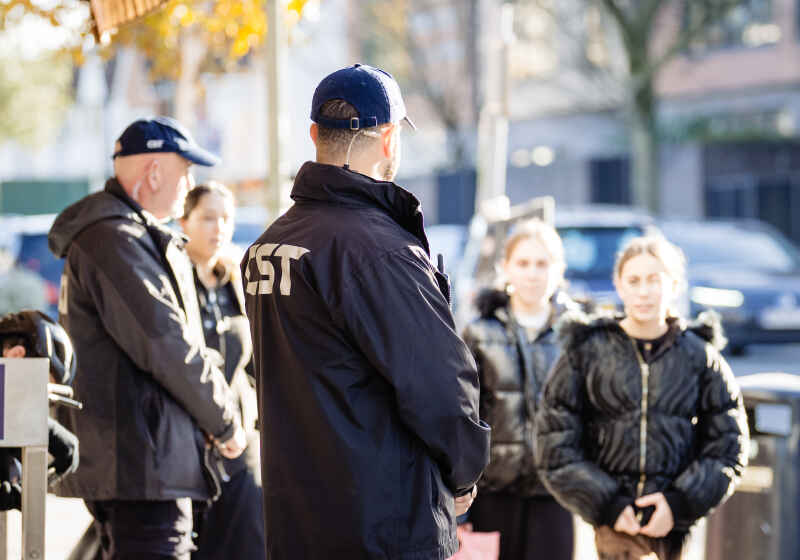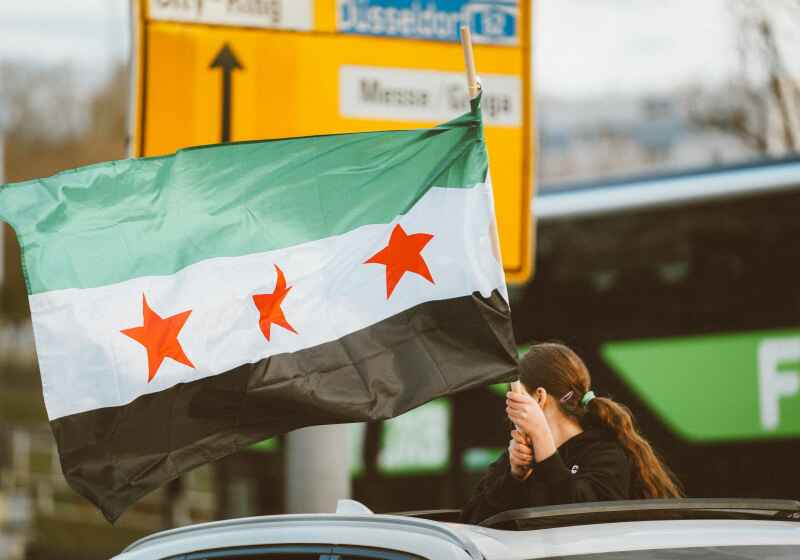CST Blog
The Lod Airport massacre and revolutionary terrorism
22 July 2010
An American court has awarded punitive damages of $300 million against North Korea, for its role in the massacre of tourists at Israel's Lod Airport in 1972. The terrorist attack was carried out by three members of the Japanese Red Army (JRA), working with the Popular Front for the Liberation of Palestine (PFLP), and resulted in the deaths of 26 people, mostly Puerto Rican Christian pilgrims.
The terrorists arrived on the same plane as most of their victims, but their luggage contained automatic rifles and hand grenades. When they reached the baggage carousel, the three calmly removed the weapons and began firing and throwing grenades, until two of the terrorists were dead (Yasuiki Yashuda, the operation leader, was killed by errant gunfire of a colleague, while Takeshi Okidoro was killed by one of his own grenades - it is unclear whether this was suicide or accident) and the third, Kozo Okamoto, had run out of ammunition and tried to flee. Okamoto was caught and sentenced to life imprisonment in Israel, released in a prisoner exchange in 1985, and now lives under political asylum in Lebanon despite a Japanese request for his extradition.
While in prison in Israel, Okamoto was interviewed by Patricia G. Steinhoff, then an Associate Professor in Sociology at the University of Hawaii, whose paper "Portrait of a terrorist: an interview with Kozo Okamoto" (Asian Survey vol.16 no.9 Sept 1976) remains a fascinating account of Okamoto's political development and motivations, and is the basis for much of this blogpost.
The allegation of North Korean support for the JRA is certainly not new. The group's first major terrorist action was the hijacking of a Japanese aircraft in March 1970 by a team of nine terrorists, armed with samurai swords as well as guns and explosives. Nobody was hurt in what turned out to be a largely symbolic hijacking, but what is relevant here is that the hijackers flew the plane to Pyongyang, where the authorities received them with, according to Steinhoff, a promise to re-educate them in "proper revolutionary methods". Meanwhile,PFLP leader George Habash was a regular visitor to North Korea, which he had described as the perfect revolutionary state. Significantly, Okamoto's older brother, Takeshi, was one of the hijackers, and would lead Kozo into JRA activities.
Looking back over a period of nearly four decades, there are some aspects of Okamoto's story which are strikingly anachronistic: the ability of Trotskyite ideology to motivate people to commit the mass murder of innocent pilgrims, for example, is likely to surprise those SWP members who receive their only political education at Marxism 2010. However, there are other aspects which are as relevant as ever for our understanding of contemporary terrorism and the process of radicalisation.
Japan at that time had a radical student movement which often organised mass demonstrations that led to violence against the police; Yashuda and Okidoro had both studied at Kyoto University, known as a particular a centre of radical student activity. Okamoto's first real activity on behalf of the JRA was to organise the screening of a propaganda film, "Declaration of World War by the Red Army and PFLP", in a room at Kagoshima University where he studied. (NB the name of the film commits to a "World War": the global revolutionary vision of the left wing terrorist groups of the 1970s is often overlooked, but bears a resemblance to the Caliphate dreams of today's global jihadists.)
However, the link between radical student activity and terrorism is never quite so direct. Campus politics can be a source of radicalisation, but this process has its limits: the JRA was formed, in part, by radicals who became frustrated with the failure of mass demonstrations to bring about revolutionary change, and moved towards a willingness to use more extreme forms of violence. Okamoto himself, despite his film booking, was hardly active on behalf of the JRA in Japan, but merely flitted about the edges of the movement, mainly because of his personal connection through his brother; another feature of many who pass through radical politics on their journey to terrorism.
However, what Okamoto did have was a romantic idea of himself as a guerilla, a taste for action, and a firm belief that the world had to be remade through violence. According to Steinhoff:
The [JRA] espouses Trotsky's theory of a simultaneous, world-wide revolution in which the proletariat of the entire world must overthrow the bourgeoisie which rules individual nation states. The Red Army believes the revolution must be violent to defeat the overwhelming power of the bourgeoisie.
[...]
By contrast, Okamoto does not seem to have paid much attention to the finer points of the ideology. The idea of being an active revolutionary was the main attraction. The precise theoretical rationale was not important, so long as it encompassed his general political frustrations and his concern about environmental pollution.
Okamoto was willing to give up his life for a cause, which was something the three terrorists discussed at length before their attack, even making half-formed plans for it to end in suicide. In his trial, Okamoto concluded his speech with the following, rather strange, passage:
When I was a child, I was told that when people died they became stars. I didn't really believe it, but I could appreciate it. We three Red Army soldiers wanted to become Orion when we died. And it calms my heart to think that all the people we killed will also become stars in the same heavens. As the revolution goes on, how the stars will multiply!
Thus Okamoto dehumanises his victims, while simultaneously claiming the power of life and death over them, all for the revolutionary cause. The neutrality with which he views the dead is striking: terrorist and victim become indistinguishable in death, and all are martyrs to the revolution. It is as if he placed no value judgement on either himself or those he killed. He certainly showed no animosity towards his victims, unlike the contempt expressed by many jihadists for those they seek to kill.
Another feature of Okamoto's story is that, when he was pressed on the details of the world revolution he sought to bring about, his vision quickly fell apart. Steinhoff continues:
One of the ambiguities of Okamoto's revolutionary conception is that the enemy is not clearly defined. Sometimes the ordinary person living in bourgeois society is regarded as part of the enemy bourgeoisie. Yet at other times, he counts the same people as potential supporters of the revolution because they are victims of such things as pollution...The neutrality which which he regards his victims is part of Okamoto's general suspension of judgment regarding the methods of revolution. He believes in the necessity and the inevitability of the revoultion. Because he foresees total overthrow of the existing arrangements of society, he does not feel bound in any way by the moral values of the present world...On the other hand, he is not really certain of what society will be like after the revolution has occurred. When I asked him what kind of a world he envisioned after the revolution, he smiled and said, "That is the most difficult question for revolutionaries. We really do not know what it will be like."
This is where the narcissism of revolutionary violence of all types is laid bare. The transgressive glamour of violence, attached to transformative ideology, generates a sense on the part of the revolutionary terrorist that there are no limits to their methods. "It is not simply a question of ends justifying means", Steinhoff observes, "but a more fundamental vagueness about what are ends and what are means." Anyone who has watched the martyrdom videos of more recent British terrorists, full of angry self-justification but rarely stating anything that could resemble a political programme, will recognise exactly this phenomenon.
Read More

Love since 7 October
14 February 2025

Antisemitic Incidents Report 2024
12 February 2025

The Fall of Assad and the Zionist “Evil Plan”
8 January 2025